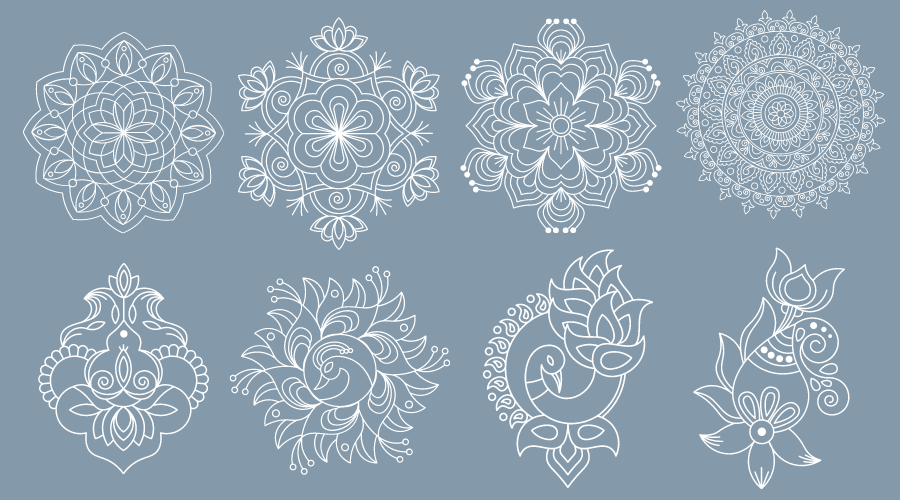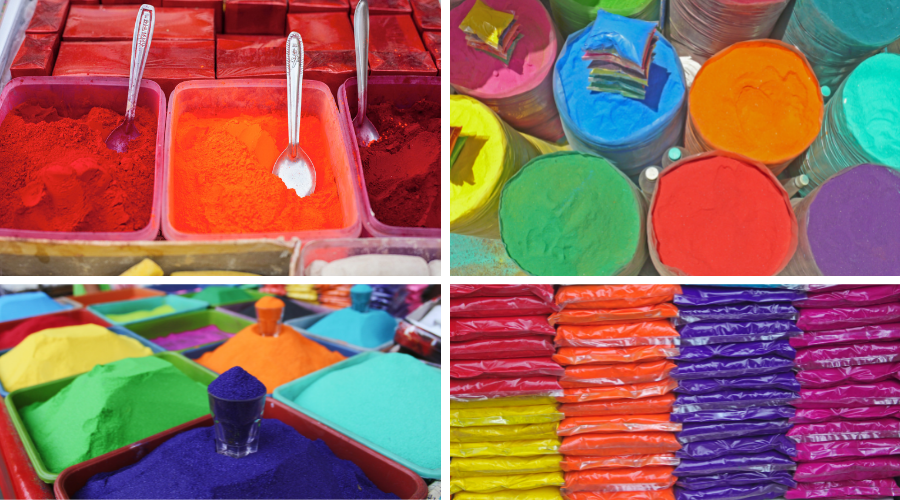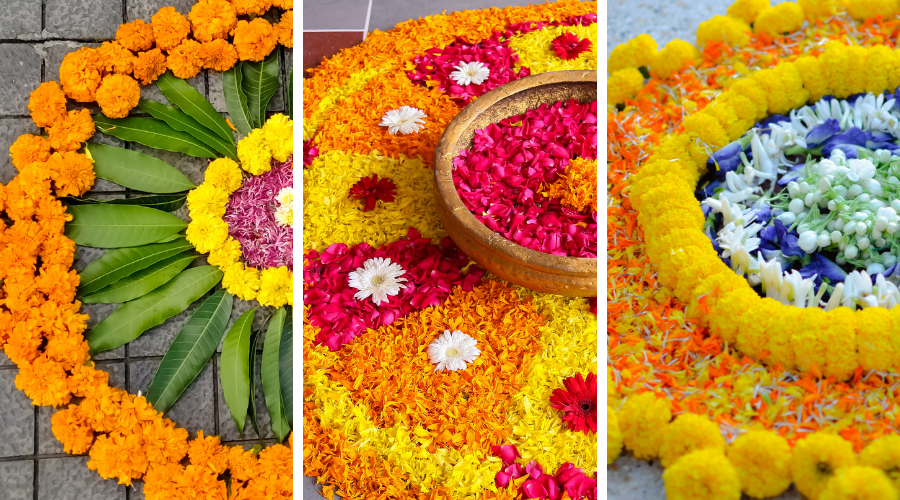A simple way to create your own Rangoli
Happy Diwali! I hope you’re getting ready for the festival of lights. It’s coming up soon, so make sure you get your Rangoli materials before then. This post will talk about some of the simple ways to create your own Rangoli in Australia.
Rangoli is a traditional art that consists of patterns and designs made from dried rice, chalk powder, or dough spread on the ground; this tradition has been carried out for centuries. The primary purpose of using Rangoli during Diwali celebrations is to welcome Lakshmi – the goddess of wealth – into people’s homes with open arms.
What is Diwali and why it is celebrated?
Diwali is a Hindu festival that celebrates the victory of light over darkness. It also marks the end of one year and the beginning of another according to the lunar calendar. The festival lasts for five days, with celebrations on each day culminating in an all-night celebration called Deepavali or “the row of lights”.
Hindus celebrate Diwali as well as people who are not Hindu symbolises hope and prosperity. Traditionally observed through acts such as lighting lamps, setting up decorations, cleaning your house, exchanging gifts with friends and family members etc.
The holiday has grown in popularity, with many people now celebrating it as their own personal New Year’s Eve! This festival signifies happiness, peace and goodwill, which makes us feel closer to our loved ones during these festive times!
Who celebrated Diwali?
Hindus, Sikhs, Jains, and Buddhists celebrated Diwali with traditional customs like giving gifts to friends and family members. Other traditions include decorating homes with oil lamps or candles; lighting fireworks; eating sweets; exchanging cards; sending greeting cards; visiting temples; making offerings to gods through prayers (puja); singing songs (bhajans), dancing (garba) etc.; playing games like Ludo, carroms etc.; reading religious.
This post will provide you with tips on how to decorate your home for Diwali, so grab a cup of masala chai and keep reading!
What is Rangoli in simple words?
Rangoli is a traditional art from India. Homes and temples around the country design them us a family. Designs are placed on a flat surface to create patterns typically made with rice flour, flower petals, or coloured sand.
A Rangoli design is usually created according to different religious rituals during festivals like Diwali or Holi, where it’s believed that the goddess Lakshmi will visit your home if you make her an intricate Rangoli pattern.
There are also auspicious occasions when people will do Rangolis at their doorstep to please their gods and invite prosperity into their lives.

What does Rangoli symbolize?
Symbolizes the beauty of life and its myriad colors. It also represents a woman’s love for her home, family, and husband. This art form is primarily found in India but some families around the world have adopted this tradition as well.
The word “Rangoli” comes from the Sanskrit word “ranga” meaning color and “kolam” meaning drawing/design. There are many different types of Rangoli designs; one popular design is called “chakli.” Chakli has an interesting story behind it.
Who usually draw Rangoli?
Women often create these designs at their homes while children play outside or help with small tasks like mixing sand into different colours. The more colourful the design, the happier it will bring their home!
A typical day-long Rangoli pattern may include flowers, leaves, peacocks, butterflies,
The chakli pattern was originally used to represent cows grazing in a field because they were drawn by rural women who wanted to express their love for cows (which provide milk).
Most people now use them as decorations around. It’s typically done on the floor of homes or courtyards using coloured powders, rice flour or chalk to create patterns, geometric shapes or pictures.
1. Choose your materials
The best type to use depends massively on where your Rangoli will be placed, so choosing which material is essential before beginning.
– Fabric or Pigment powders can be used in a wide variety of ways for creating beautiful Rangolis, such as using it on the floor or on your hands. You can also get fabric with patterns already on it that make even more interesting designs than just plain fabric.
– Sand: Sand is another popular material that people use to create stunning Rangolis. The sand can be applied in many different ways and provides a unique texture when compared to other materials like flour or rice powder.
– Seeds: Seeds are often thought of as being a great way to create beautiful designs.
– Flower petals: find some fresh flowers in your garden or on the sidewalk outside. Make sure you leave at least one inch between each line so that there’s room for all the petals.
Other such a marble dust, saw dust, rice, colured suzi/rawa, pulses coulres stones

2. Pick a color palette to work your own Rangoli
Pick a color palette and we will tell you what it means! What is your favorite color?
The colors of the rainbow are red, orange, yellow, green, blue and purple. You might even find that some of these colors have more than one meaning.
Some of the most traditional and famous colors in Hindu culture are yellow, red, and orange. In Hinduism, these three colors symbolize fire, sun, and earth respectively.
The goddess Lakshmi is often depicted as a woman with four arms who wears a golden-yellow sari representing wealth or prosperity. Some Hindus believe that if you wear a red or orange shirt, then your kundalini energies will rise up through your spine into your head, making you more creative!
In Hindu tradition, it is believed that Rangoli designs shouldn’t have black colour because black. Black colour stands for death, but some people disagree with this sentiment, so there are many variations of Rangoli, such as white, yellow, withe, red, pink, blue etc.

3. Simple way to create your own Rangoli
I am a big fan of Rangoli and since I have been in India, I’ve learned to make them with plastic spoons. They are so easy and quick. You can use them as the main decoration or just accentuate certain parts of your design. There are plenty of places on the internet with videos..
Rangoli design with plastic spoons. It’s an easy craft that you can do in minutes! We are going to be using the following items for this project:
1) Spoons (plastic)
2) Pigment powders
But what about those who are away from home?
Here’s some guidance for all you Diaspora people out there:
1) Make your own celebration – this could be as simple as making a traditional meal and lighting candles at sunset to mark the occasion, create your own Rangoli.
Indian people are one of the most populous ethnic groups in Australia. They are the second largest immigrant group, with over 1.5 million Indians living in Australia.
Diwali isn’t a nationwide public holiday in Australia but it is recognised as one of the most important festivals for Hindus, Sikhs and Jains.
About Rocket Remit
Rocket Remit is the worlds fastest international money transfer service. Send money instantly to over 50 overseas countries at very competitive rates.
Use the country selector to choose the country and check the rate.
Click here for more information on how to send money using Rocket Remit.